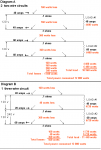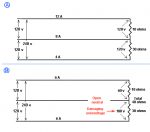brother
Senior Member
When I hear something similar to what you are saying, others reply and say this is why a person must be 'trained and qualified' before they start playing with electricity. This is why some electricians get paid the big bucks . lol.As much as I used MWBC in the past, there is no way I would remove required handle ties. They aren’t there for those of us that grew up with, them. Remove if you want while trouble shooting but put them back. That next kid may not have the slightest.
Some area ECs were installing AFCIs then taking them out after inspection. Grrr.


